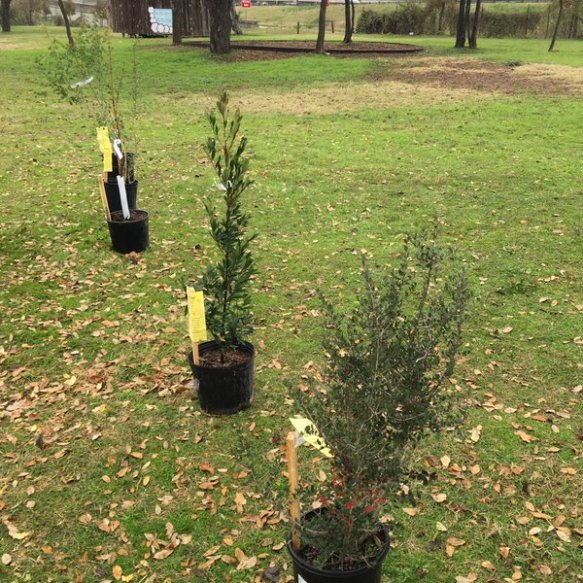I’m sick today. If I didn’t speak for a living, I could probably still go to work, but I’ve got laryngitis, so I am out of commission. Trouble is, as an hourly employee and freelancer, “no work” means “no pay.” The good news is, Mr. Vega and I have the great good fortune of a fully funded (3-6 months of living expenses) emergency fund, and have gotten the hang of living below our means, so we probably won’t need to dip into savings to cover a few days of lost work.
But it wasn’t always like this. Most of my work has come without paid sick time or vacation days, and before I learned to live modestly, even one sick day could create a financial crisis. Never mind “paycheck-to-paycheck,” I lived “credit card bill-to-credit card bill” for a decade, and viewed due dates as mere suggestions, racking up late fees and ruining my credit, while still getting $100 spa treatments on a regular basis. If I heard the suggestion during those years to live within or below my means, it didn’t register, because I wouldn’t have even known where to start.
It’s been eight years since I found myself living in a small, sad apartment, staring at thousands of dollars in credit card and tax debt, alongside statements for hefty paychecks, wondering how I could have earned such a high hourly rate for so long and have nothing to show for it. Less than nothing, actually, because I had a negative net worth!
Something happened in that lonely apartment, and before I knew it, I was canceling credit cards, filing amended tax returns in search of deductions that had been overlooked in my sloppy record-keeping, and trying out slow-cooker recipes to lower my food costs. I ignored my health and my relationships in order to work as much as I possibly could to get the debt paid. My intense focus got me debt-free within a year, but two years after that, I found myself with a $6,000 credit card bill, and a $20,000 car loan. I had learned how to pay off debt, but not how to avoid it in the first place. I hadn’t learned to budget, and I not learned to live below my means.
My first attempts at budgeting failed miserably, because I based them on templates that had little to do with my actual spending habits. As a single woman living in Los Angeles, I spent more than the national average on rent and transportation, but nothing on child care. Grocery expenses were low, restaurant spending was high, and visits to the hair salon were (and still are) non-negotiable. I came to understand that each of us is unique, and our earning, spending and savings will reflect that. What’s more, even one’s own budget will not remain a perfect fit year in and year out, or from one month to the next. Life changes quickly, and we have to change with it. I learned that if you’re ever going to get a handle on this money thing, you have to write down everything you spend. This is a requirement for success, but I struggled with it terribly until I discovered Mint (with whom I am not affiliated, and from whom I have received no compensation), which made it easy for me to see where the money was coming from and where it was going, so that I could begin to make changes based on what was actually happening.
With the whole ugly truth laid out in front of me, the first thing I did was to stop the most obvious money leaks. These are the areas where economizing is relatively painless: I started buying six-packs of soda at the grocery store and taking drinks to work instead of dropping $1.50 a day into the vending machine. I’d drive around the block looking for street parking instead of mindlessly pulling into the pay lot. My lifestyle didn’t change much, and I was still spending too much money, but I was beginning to wake up to the possibility of doing things differently. Things got much more refined later, but at this early stage, every time I didn’t super-size my order was a win for me.
After I got the hang of easier things, I began to get creative with the less-obvious opportunities for savings. I scoured my auto insurance policy for coverage I didn’t need, checked that my cell phone plan wasn’t more than I needed, and scheduled coffee dates with friends instead of dinners out. It became a game for me, and no savings was too small: the double-loader washing laundromat machine that cost a quarter less than two separate loads, the ten-cent savings at the coffee shop for bringing your own cup (later, of course, I switched to brewing my own coffee), the grocery store that offered a nickel credit for bringing your own bag…. I began to enjoy finding some sort of savings everywhere I went. After all, pennies add up to dollars, eventually.
Another major step in my financial awakening was beginning to declutter. I thought selling some of my no-longer-used things might be a good way to create more space in my home and in my budget. It was quite a shock to learn that I couldn’t expect to receive even half of what I had paid for most things, even if they had never been used! The exercise of decluttering and downsizing my possessions made me keenly aware of the purchases I made going forward. I have since cultivated a practice of buying less, buying for life when I can, and doing my level best to avoid retail prices everywhere else.
When I had just about reached the limits of minimizing my expenses within the life I was living, it became time for me to make a big move. For me, this first meant cutting cable and killing my TV, and later, moving in with a roommate to reduce my rent by $400 a month. And while it seems counterintuitive to not have begun with these things, baby-stepping my way up the ladder of frugality allowed me to garner small wins and develop an experiential conviction that larger sacrifices would be worth the effort. And they definitely were.
With my expenses cut as deeply as I could manage, my next task was to learn to earn more, which was by far the riskiest thing I did, as it involved working less, and taking a few chances with my schedule of part-time jobs and freelance work. But because I had finally paid off all my debt (again!), and brought my expenses more in line with my earnings, I could afford the gamble. The graphs and trends on Mint helped me realize that the job I deemed most stable, but that also caused me the most stress, accounted for only 10% of my annual income. With some trepidation, I left that job and increased my availability with the employer who was less stable, but paid much more. As last-minute freelance assignments come with a 20% premium, I held off on booking lower-paying work in advance, in the hopes that the higher-paying, same-day assignments would be plentiful enough to meet my needs. And I spoke up: when a new manager came on board at the freelance agency, I told him honestly that although the agency was one of my favorite employers, I frequently declined work there in favor of higher-paying jobs. Within the month, I was offered a rate commensurate with what I earned elsewhere. By choosing my assignments carefully, and giving highest priority to the highest-paying jobs, I was able to increase my income and reduce my workload.
Rinse and Repeat. By the time I had found so many ways to reduce my daily expenses, had brought down a few of the big ones, and learned to make more money in less time, life had changed enough that going back to the beginning seemed like a good idea. I had met and married my husband, and we began budgeting together early on in our dating relationship. “My goals” had been modified and expanded to become “Our goals,” which included saving for a house, and while the household income had doubled, regular expenses had not (two may not live quite as cheaply as one, but happily, the cost of running a household doesn’t double when its occupancy does). Eating a nearly meat- and alcohol-free diet didn’t work so well for my husband, so grocery expenses were higher, but cooking and eating at home was more fun with a companion, and so the restaurant budget shrank. And since we moved from California to Texas, we’re spending less on gasoline, but more on mosquito repellant!
Perhaps the biggest lesson I’ve learned on the path to living below our means is that you’ve got to have fun doing it. Brown-bagging my lunch means I get to eat healthier, more interesting meals every day, and still have enough money to get my hair done every other month, without having a minor panic attack when it comes time to pay. Losing my loyalty to name-brand products made by companies who aren’t concerned with my well-being means that I can fill our fridge without draining our bank accounts. Finding free fun on weekends lets us enjoy life while saving for a house. And taking a few calculated risks in order to earn more money allows me to stay home and write when I’m sick without fear that the lights will get turned off next month because of it.
Is living within or below your means important to you? What changes have you made, or would you consider making, to do it?





